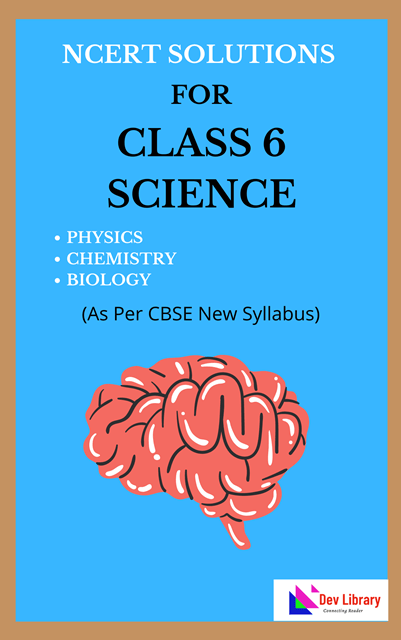NCERT Class 6 Science Chapter 10 Living Creatures: Exploring their Characteristics Solutions English Medium to each chapter is provided in the list so that you can easily browse through different chapters NCERT Class 6 Science Chapter 10 Living Creatures: Exploring their Characteristics Notes and select need one. NCERT Class 6 Science Chapter 10 Living Creatures: Exploring their Characteristics Question Answers Download PDF. NCERT Class 6 Solutions for Science English Medium.
NCERT Class 6 Science Chapter 10 Living Creatures: Exploring their Characteristics
Also, you can read the NCERT book online in these sections Solutions by Expert Teachers as per Central Board of Secondary Education (CBSE) Book guidelines. NCERT Class 6 Science Textual Solutions are part of All Subject Solutions. Here we have given NCERT Class 6 Science Chapter 10 Living Creatures: Exploring their Characteristics Notes English Medium. CBSE Class 6 Science in English Textbook Solutions for All Chapters, You can practice these here.
Living Creatures: Exploring their Characteristics
Chapter: 10
| Let us enhance our learning |
1. List the similarities and differences in life cycles of plants and animals.
Ans: Similarities in life cycles of plants and animals:
(i) Both have distinct stages of development (e.g., germination, flowering in plants; egg, larva, adult in animals).
(ii) Both plants and animals grow from a small initial stage (seed or embryo) into a mature form.
(iii) Both undergo process to produce offspring (seeds for plants and young ones for animals)
Differences in life cycles of plants and animals:
(i) Animals are generally mobile and can move from one place to another, while plants are stationary.
(ii) Plants exhibit indeterminate growth (can grow throughout their life), while animals have determinate growth (stop growing after reaching maturity).
(iii) Animals have specialized organs for reproduction, while plants use flowers, cones, or spores.
2. The table on the next page shows some data. Study the data and try to find out examples appropriate for the conditions given in the second and third columns. If you think that an example for any of the conditions given below is not possible, explain why.
| S.no. | Does it grow? | Does it respire? | Example | Remarks |
| 1. | No | No | ||
| 2. | No | Yes | ||
| 3. | Yes | No | ||
| 4. | Yes | Yes |
Ans:
| S.no. | Does it grow? | Does it respire? | Example | Remarks |
| 1. | No | No | Rock | Non-living, does not grow or respire. |
| 2. | No | Yes | Virus | Viruses are non-living outside host cells but respire in host. |
| 3. | Yes | No | Crystals | Non-living, can grow by accumulation. |
| 4. | Yes | Yes | Human, plants | Living things. |
3. You have learnt that different conditions are required for seed germination. How can we use this knowledge for proper storage of grains and pulses?
Ans: To ensure proper storage of grains and pulses and prevent germination.
(i) Keep Dry.
(ii) Cool Storage.
(iii) Airtight Containers.
4. You have learnt that a tail is present in a tadpole but it disappears as it grows into a frog. What is the advantage of having a tail in the tadpole stage?
Ans: (i) Swimming Ability: It helps the tadpole swim efficiently in water to find food and escape predators.
(ii) Balance and Stability: Assist in maintaining balance while moving in water.
5. Charan says that a wooden log is non-living as it cannot move. Charu counters it by saying that it is living because it is made of wood obtained from trees. Give your arguments in favour or against the two statements given by Charan and Charu.
Ans: Against Charan: The wooden log was once part of a living tree, which was alive and exhibited characteristics of living beings.
Against Charu: Once the wood is separated from the tree, it no longer exhibits growth, reproduction, or other life processes, making it non-living.
6. What are the similarities and distinguishing features in the life cycles of a mosquito and a frog?
Ans: Similarities:
(i) Both begin life as eggs.
(ii) Both have a larval stage (tadpole in frogs, larvae in mosquitoes) that is aquatic.
Distinguishing Features:
Mosquitoes:
Egg → Larva → Pupa → Adult
Respiration: Larvae and pupae breathe through siphons.
Frog:
Egg → Tadpole → Froglet → Adult
Respiration: Tadpoles have gills, adults have lungs and can respire through their skin.
7. A plant is provided with all the conditions suitable for its growth (Fig. 10.9). Draw what you expect to see in the shoot and the root of the plant after one week. Write down the reasons.
Ans: Expected growth of plant after one year:
Shoot Growth:
(i) Growth upwards, towards the light source.
(ii) Leaves will spread out and new leaves might appear to help the plant make its food using sunlight.
Root Growth:
(i) Growth downwards, into the soil for stability and nutrient absorption.
(ii) New tiny roots (root hairs) will grow to help the plant absorb more water and nutrients.
Reasons:
(i) Photosynthesis: The leaves produce food using sunlight, carbon dioxide, and water, leading to overall plant growth.
(ii) Light Attraction: The shoot grows towards the light to catch more sunlight, which the plant needs to make its food.
(iii) Water and Nutrients: The roots absorb water and important nutrients from the soil, helping the plant to grow better.
8. Tara and Vijay set up the experiment shown in the picture (Fig. 10.10). What do you think they want to find out? How will they know if they are correct?
Ans: Tara and Vijay are likely trying to understand how the orientation of a seed affects the growth direction of the shoot (the green art above ground) and the root (the part below ground).
Observation: If the shoot always grows upwards (towards the light) and the root always grows downwards (into the soil), regardless of how the seed is placed, this shows that plants have natural mechanisms (like phototropism and gravitropism) that guide their growth direction.
9. Design an experiment to check if temperature has an effect on seed germination.
Ans: Aim: To study the effect of different temperatures on seed germination.
Materials: Identical pots, soil, seeds, thermometers, and different temperature-controlled environments (e.g., refrigerator, room temperature, heated environment).
Procedure:
(i) Fill each pot with the same type of soil.
(ii) Plant seeds in each pot.
(iii) Place each pot in a different environment with controlled temperatures (e.g., cold, room temperature, warm). For example, keep one pot outside in balcony to get sunlight. Put another in shade in the room. Keep the third one in basement or at coldest part of the house.
(iv) Water each pot equally.
(v) Record the number of seeds germinated in each environment daily for two weeks.
Observations:
(i) Note the number of seeds that germinate in each container.
(ii) Measure the length of the emerging roots and shoots.
Conclusion:
Determine the optimal temperature for seed germination based on observations.

Hi! my Name is Parimal Roy. I have completed my Bachelor’s degree in Philosophy (B.A.) from Silapathar General College. Currently, I am working as an HR Manager at Dev Library. It is a website that provides study materials for students from Class 3 to 12, including SCERT and NCERT notes. It also offers resources for BA, B.Com, B.Sc, and Computer Science, along with postgraduate notes. Besides study materials, the website has novels, eBooks, health and finance articles, biographies, quotes, and more.



